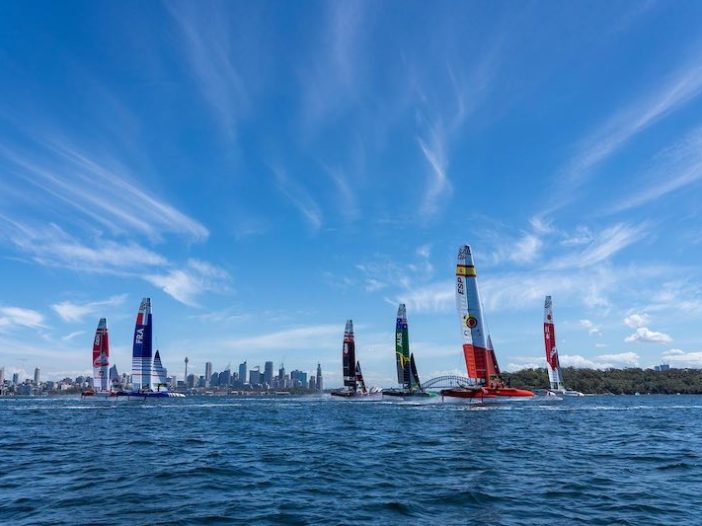
Tesla has teamed up with global catamaran racing championship, SailGP, to help the fledgling sport’s usually diesel-fuelled mobile recharging stations switch to solar and battery storage.
SailGP said it had worked with Tesla over a period of eight months to engineer the fully portable, off-grid clean energy solution, to use to recharge the batteries used in the F50 racing catamarans to power their electronics, hydrofoils and communication systems.
The result, successfully tested in Sydney earlier this year, was a mobile recharging container equipped with four 13.5kWh Powerwalls and 15kW of solar PV. (See video and images below.)
The “excellent application” of the Powerwall system was noted on LinkedIn this week by Josef Tadich, a senior manager of engineering at Tesla in Australia.
“We were able to replace the existing diesel genset with 4 Powerwalls (20kW) operating off grid with 15kW of residential PV that then charged the individual SailGP battery packs for the race,” Tadich explained.
“Grid-forming battery inverters provide a great opportunity to replace traditional gensets in applications like this, eliminating the need for genset maintenance/operations, noise and emissions, and the expensive shipment of diesel to what are often remote locations,” he said.
The renewable-based alternative to costly and polluting diesel fits well with SailGP’s goal of achieving carbon neutrality by 2025, a target set by the sailing series’ co-founder and CEO Russell Coutts at the beginning of the year.
According to the Sustainability Report, SailGP is valued at $US200 million after just one year of trading, having secured a significant investment from giant sports content company, Endeavor, just a few weeks shy of the launch of its second season in Sydney.
Season one, the report says, reached a global audience of 1.8 billion over the course of its five races – in Sydney, San Francisco, New York, Cowes and Marseille – with more than 130,000 spectators turning up to watch live.
As well as boasting the world’s fastest sail racing, SailGP lays claim to being the first competition to adopt World Sailing’s sustainability charter for special events, as well as the UNFCCC’s Sports for Climate Action Framework in which it has committed to measuring, reducing and offsetting its carbon emissions in line with the Paris Agreement.
Following the Sydney test, the hope is that the Powerwall and solar solution can be applied at all of the races in all future seasons of the competition.
“There’s no question that we want to partner with sustainable companies,” Coutts told The Sustainability Report in February.
“And that works both ways. They want to partner with us. There are no discussions that we’re having at the moment that don’t involve sustainability.
“I want to beat the 2025 target,” Coutts added. “Internally, some of our people mentioned that a lot of organisations have set 2030 as the goal. But then we sat around and talked about it and said ‘why not’.
“I think there’s a tremendous distance to go, and not just in sport. Look how rapidly things are changing.
“When we showcase what we do I want to link it with speed. There’s no point talking about it for years and saying we’ll eventually get there. Actually, it’s much more urgent than that and so we need to find the solutions quickly.”

Sophie is editor of One Step Off The Grid and deputy editor of its sister site, Renew Economy. Sophie has been writing about clean energy for more than a decade.



